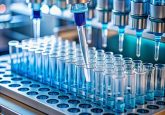Bioanalysis of biotherapeutic proteins and peptides: immunological or MS approach?

“When peptide bioanalysis is required, LC–MS/MS could be the analytical method of choice unless the required sensitivity is unattainable … it remains to be seen whether MS can supplant immunoassays for large-molecule analysis in much the same way that ELISAs supplanted RIAs in the 1980s, but the tools are available.”
Historically, the bioanalysis of proteins and peptides has been performed using immunological-based techniques. However, continued improvements in MS-based methodologies over the past 10 years have generated assays with sufficient robustness and sensitivity to be applied to the quantitation of biomolecules. This was evident at the European Bioanalysis Forum (EBF) ‘Large Meets Small’ meeting in June 2011, where bioanalytical laboratories discussed the current state of the art in protein and peptide bioanalysis by LC–MS/MS. The general outcome of the EBF meeting indicated that LC–MS/MS is a credible technique for quantifying biotherapeutics in biological matrices. This editorial aims to highlight the pros and cons of the two techniques, and raise issues that need to be considered when selecting the most appropriate bioanalytical technique for a given biotherapeutic.
Protein bioanalysis
The development of increasingly sensitive MS systems, together with the introduction of UHPLC column chemistries, has given us the opportunity to use MS-based methods for the detection of macromolecules. However, the quantitative bioanalysis of biotherapeutic proteins has traditionally been performed using immunological-based techniques, using antibodies raised against the target protein or peptide. The most commonly used methods are ELISA-based, which supplanted radioimmunoassays (RIAs) as the method of choice in the early 1980s. RIAs still have their place where sensitivity is paramount, but immunoassay techniques such as electrochemiluminescence and fluorescence are emerging that offer the ability to multiplex while reducing the sample volume required for analysis.
In December 2012 LGC acquired the leading bioanalytical business from Quotient Bioresearch. All services offered by Quotient Bio Analytical Sciences now form part of the LGC Group. Click here to view ‘LGC’ company profile.
Our expert opinion collection provides you with in-depth articles written by authors from across the field of bioanalysis. Our expert opinions are perfect for those wanting a comprehensive, written review of a topic or looking for perspective pieces from our regular contributors.
See an article that catches your eye? Read any of our articles below for free.






